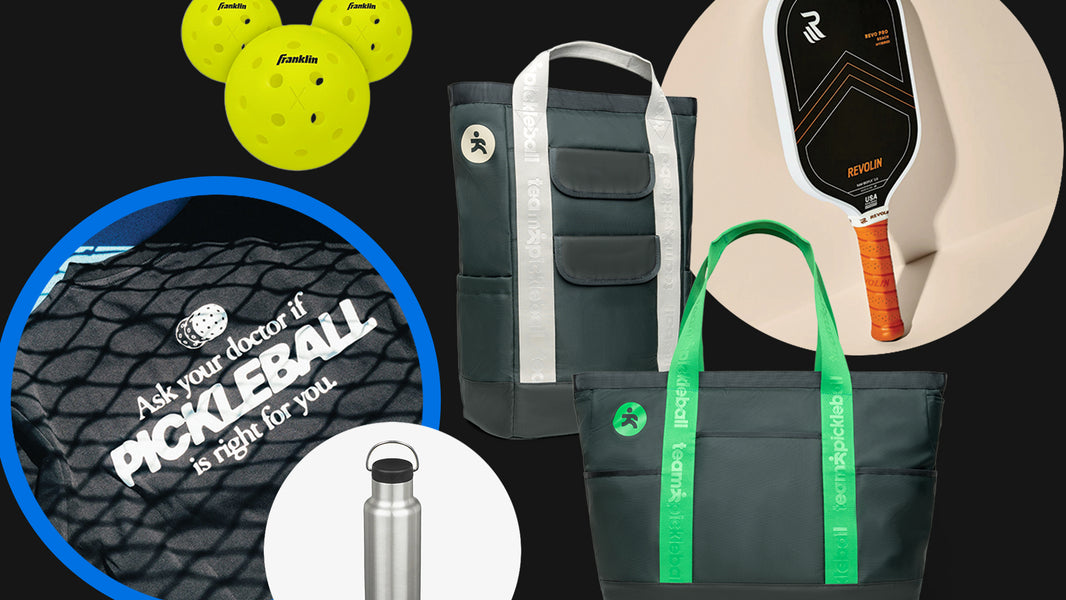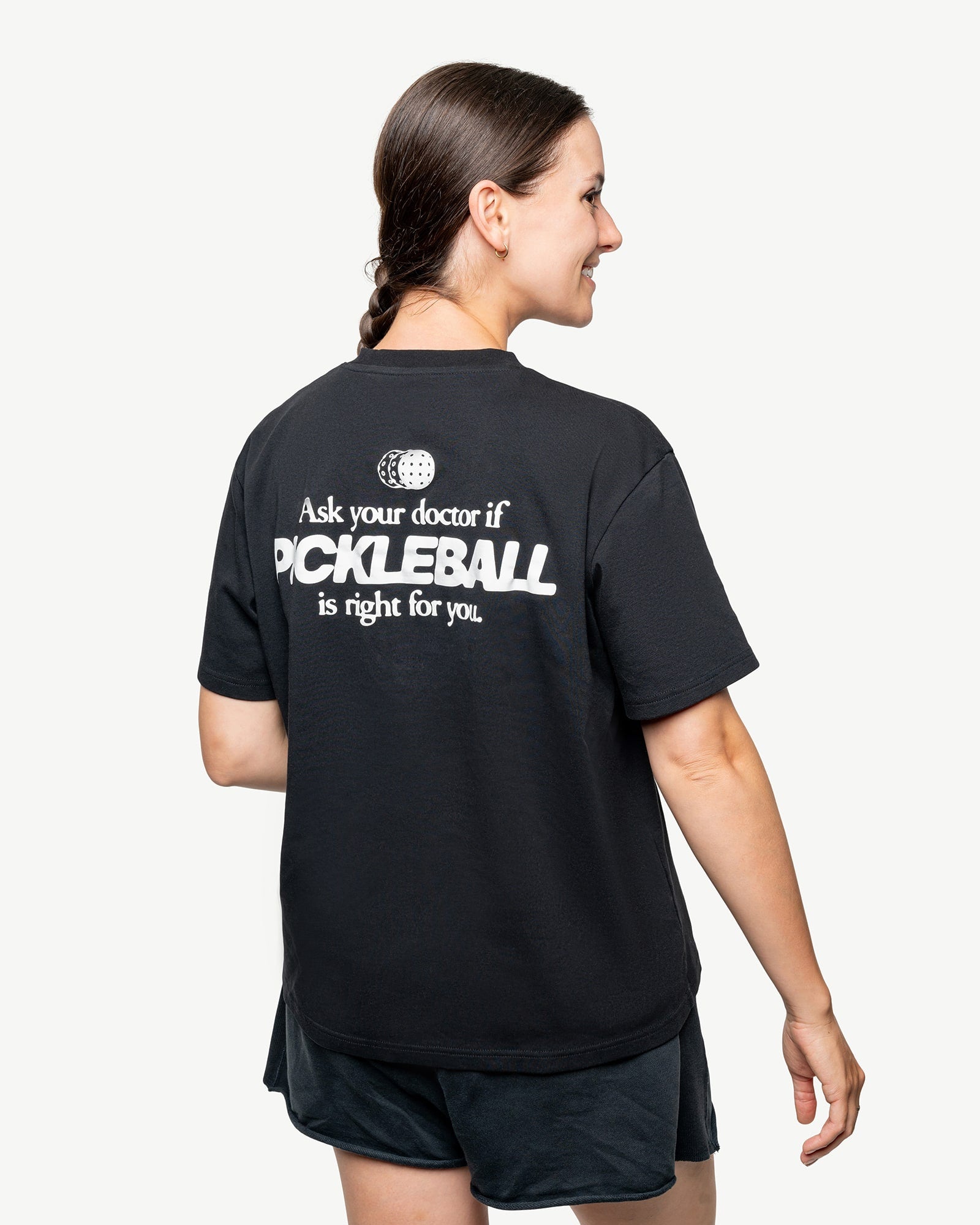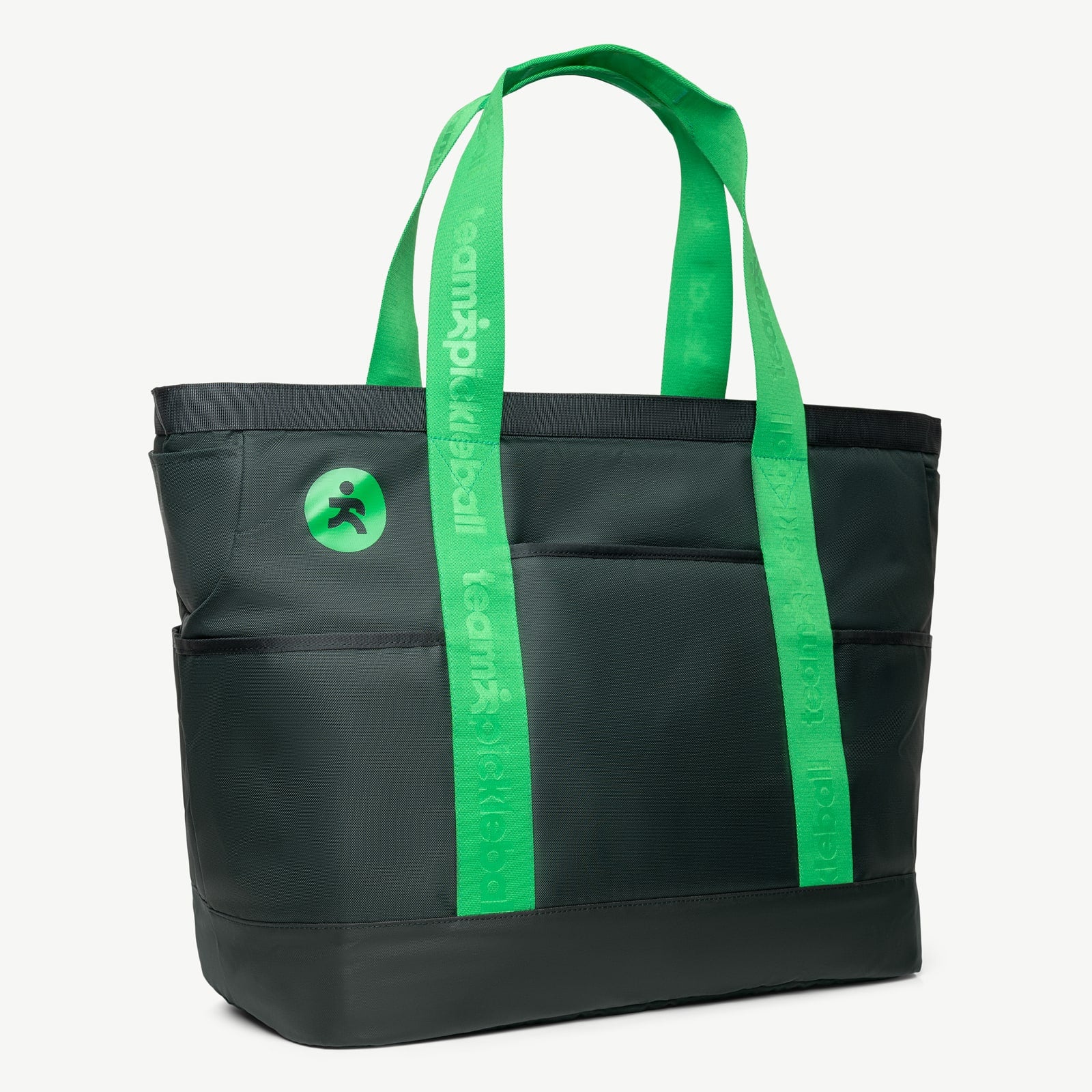If it wasn't already obvious, pickleball has been sweeping the nation, captivating players of all ages with its dynamic gameplay and social atmosphere. A vital element of the game is the court itself. Here's everything you need to know about pickleball court dimensions, surfaces, and how they affect gameplay.
Standard Size Pickleball Court and Net Height
A standard size pickleball court measures 20 feet wide by 44 feet long, the same size as a doubles badminton court. It is striped similarly to a tennis court but with some modifications, including a non-volley zone (the kitchen) extending 7 feet from the net on both sides. The measurements for a pickleball court ensure that gameplay remains fast and challenging, with specific pickleball court zones like the kitchen playing a critical role. The net in pickleball stands 36 inches high at the sidelines and dips to 34 inches in the center. This height is crucial as it affects the gameplay strategy, particularly when dinking at the net.

Outdoor vs. Indoor Play
Pickleball courts can be set up both indoors and outdoors, with each setting offering a different playing experience due to the pickleball court specifications like the surface and type of ball used.
-
Outdoor Surfaces: Typically, outdoor pickleball courts are made of concrete or asphalt, providing a durable and weather-resistant playing area. The rougher surface affects the ball's bounce and players' movement. Outdoor pickleball balls are designed to be heavier and less affected by wind, and they feature a harder construction to withstand the abrasive nature of outdoor courts.
-
Indoor Surfaces: Many indoor pickleball courts are found in gymnasiums with wooden or synthetic floors. These surfaces are smoother, which can cause an outdoor ball to slide unpredictably. Consequently, indoor pickleball balls are softer and have larger holes, designed to grip and bounce better on smoother indoor surfaces. This typically makes the game a bit slower compared to outdoor balls. Some locations offer an outdoor court surface in an indoor setting, allowing you to play with outdoor balls for a faster game.
Playing on Tennis Courts
Pickleball courts can often be found sharing space with tennis due to the similarities in the sports. For a deeper dive, be sure to check out our article on how to play pickleball on a tennis court. In short, a standard tennis court can accommodate two pickleball courts set up sideways on either side of the tennis net, although you will need portable nets. It's important to note that a tennis net is typically set from 36-42 inches from center to sideline, which is higher than the center height for a pickleball net. This slight difference in the center, paired with the higher height on the side, can make it difficult to dink or make normal hits over the net if you are accustomed to a pickleball net height. This is why we don't typically recommend playing directly on a tennis court with the tennis net, as you will have to hit at least 2 inches higher than you normally would, which will cause you to hit poorly when playing on a real pickleball court. Often times, though, you will find portable nets or semi-permanent nets at tennis court locations that are set up for pickleball, as well. This setup allows for efficient use of space and resources, especially in community centers and sports facilities.
Simple Pickleball Court Setup
For those looking to play pickleball without access to a dedicated court, there are simpler and more portable options. Purchasing a portable pickleball net is an effective way to set up a temporary court on various flat surfaces, like driveways or unused parking lots. These nets are easy to set up and take down, making them ideal for casual play or practice. In addition to the net, marking the pickleball court dimensions can be easily done with chalk or temporary court tape. Chalk is especially useful for temporary setups as it can be washed away after play. If you use chalk enough, you can even attach a piece to the end of a pole to make drawing the lines faster. This flexibility allows pickleball enthusiasts to create pickleball court sizes wherever there is enough space, so the game can be enjoyed by more people.
















